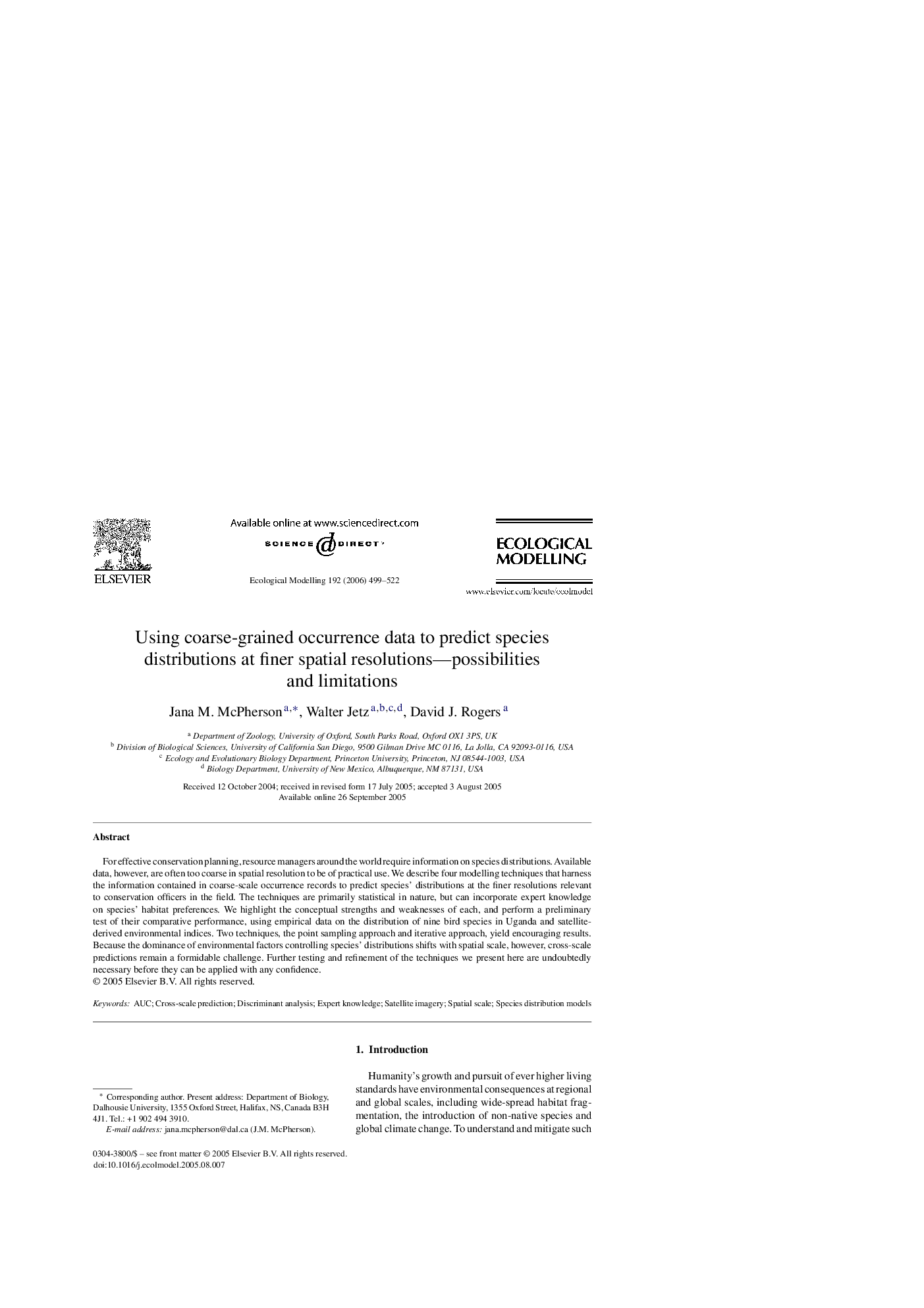| Article ID | Journal | Published Year | Pages | File Type |
|---|---|---|---|---|
| 4379291 | Ecological Modelling | 2006 | 24 Pages |
For effective conservation planning, resource managers around the world require information on species distributions. Available data, however, are often too coarse in spatial resolution to be of practical use. We describe four modelling techniques that harness the information contained in coarse-scale occurrence records to predict species’ distributions at the finer resolutions relevant to conservation officers in the field. The techniques are primarily statistical in nature, but can incorporate expert knowledge on species’ habitat preferences. We highlight the conceptual strengths and weaknesses of each, and perform a preliminary test of their comparative performance, using empirical data on the distribution of nine bird species in Uganda and satellite-derived environmental indices. Two techniques, the point sampling approach and iterative approach, yield encouraging results. Because the dominance of environmental factors controlling species’ distributions shifts with spatial scale, however, cross-scale predictions remain a formidable challenge. Further testing and refinement of the techniques we present here are undoubtedly necessary before they can be applied with any confidence.
